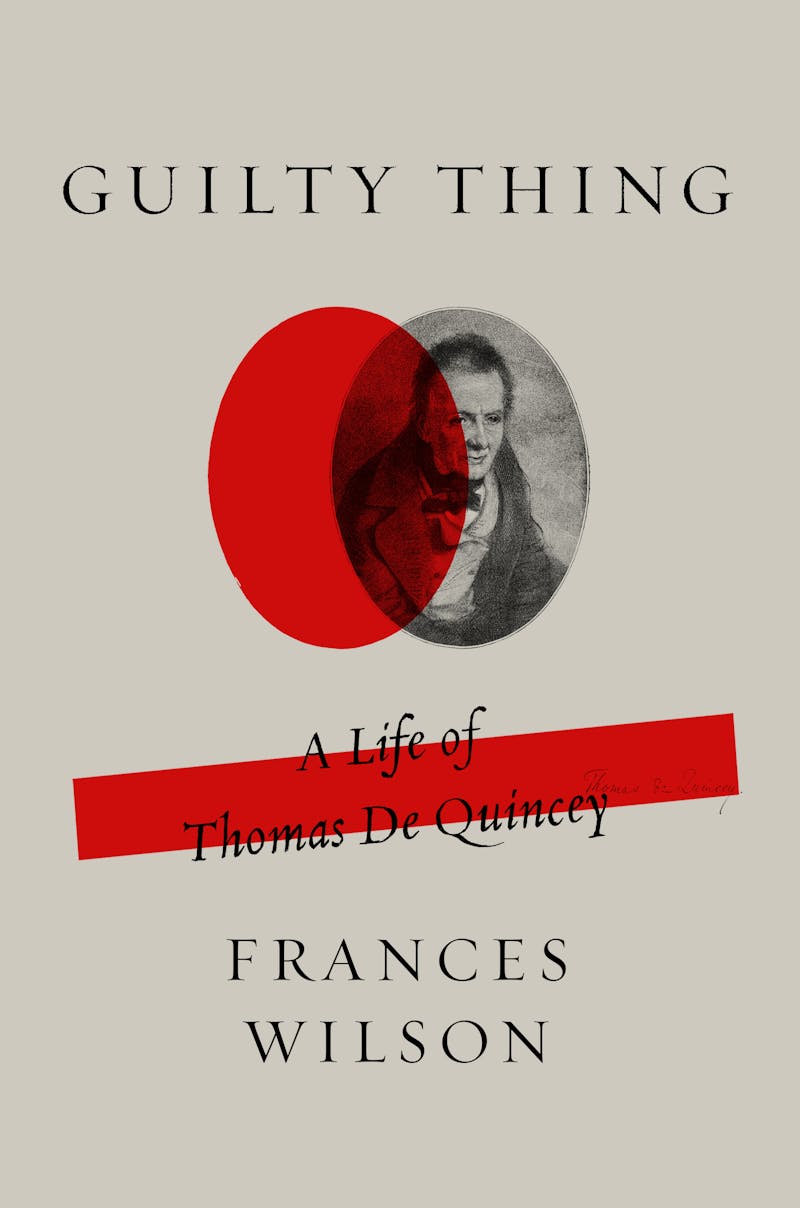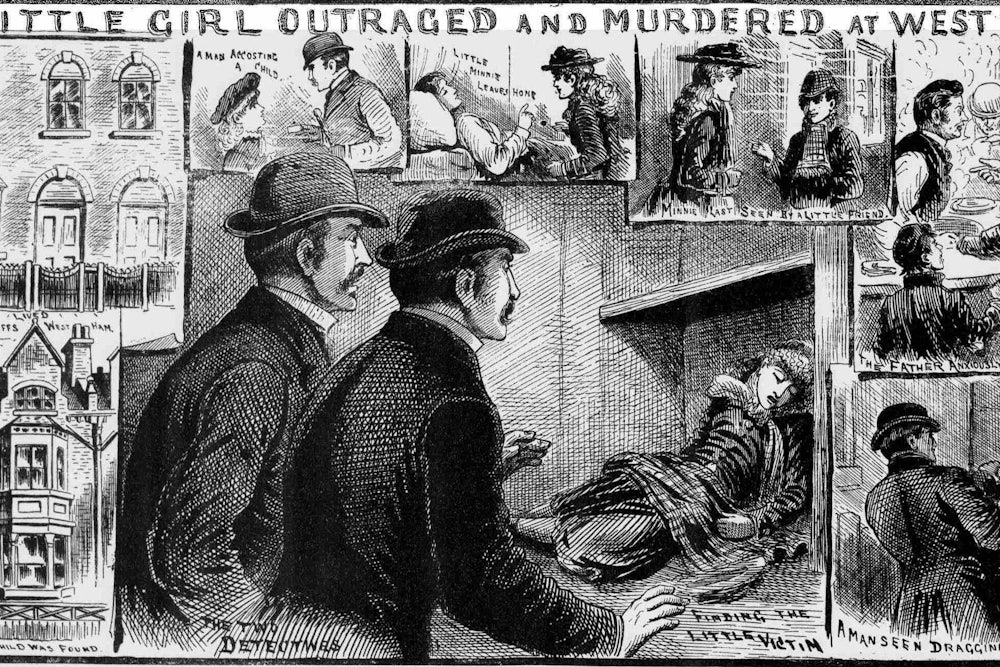There’s a moment in Alfred Hitchcock’s penultimate film, Frenzy, when the murderer Robert Rusk, a serial sexual predator, finds himself in a bit of a bind. Having just loaded the corpse of the hero’s girlfriend onto a truck carrying sacks of potatoes, Rusk realizes he’s left some incriminating evidence on the body. He climbs back up to retrieve it, but the truck begins moving, taking him further from London and into the country. As Rusk struggles to retrieve his tie-pin from his victim’s hand, he discovers rigor mortis has set in and he’s forced to break her fingers to get it free. It’s an elaborate, perversely comic scene in which a loathsome monster is strangely empathetic: Like any workaday slob, he’s made a small mistake in his job, and fixing it has turned into an increasingly complex comedy of errors. Who couldn’t sympathize with him? This is one of the great hallmarks of Hitchcockian suspense: The moment when, against all your instincts, you find yourself developing some measure of sympathy with the Devil.
More than a hundred years before Hitchcock began making films, Thomas De Quincey first pegged this affect in an 1823 essay, “On the Knocking at the Gate in Macbeth.” The essay turns on the moment when Macbeth is in the process murdering King Duncan. Macbeth is momentarily disturbed by MacDuff’s knocking at the gate, and he panics that his crime might be discovered. Why, when we know Macbeth’s crime to be immoral, do we switch allegiance, ever so momentarily, from the victims to the murderers?
De Quincey had no language available in the canon of Shakespearean criticism to describe how such a moment engendered “a peculiar awfulness and a depth of solemnity,” it fell to him to invent it. “Murder, in ordinary cases, where the sympathy is wholly directed to the case of the murdered person,” he reasons, “is an incident of coarse and vulgar horror; and for this reason that it flings the interest exclusively upon the natural but ignoble instinct by which we cleave to life.” This attitude to primal panic would never “suit the purposes of the poet.” What, then, must a poet do to elevate such a scene to high art? The only option: “He must throw the interest on the murderer.” Since 1823, this has become commonplace; from The Godfather to Silence of the Lambs to Breaking Bad, it’s become the default position of any serious drama to include the perspective of the murderer. Like it or not, our imaginative lives now reside in De Quincey’s dreamworld.
Fittingly, Frances Wilson’s new biography of De Quincey, Guilty Thing, begins not with his birth or his lineage, but with a murder: In the early hours of December 8, 1811, shopkeeper Thomas Marr, his wife and infant child, and his apprentice were all found dead, their throats slit and their heads bashed in. With no real suspects, the case fascinated everyone in England, but none more so than Thomas De Quincey himself. The Ratcliffe Highway murders, as they became known, inspired in De Quincey a “profound reverie,” according to his friend Samuel Taylor Coleridge, and would occupy his mind and his writings for decades to come. The murders, De Quincey would later write, “had an ill effect, by making the connoisseur in murder very fastidious in his taste, and dissatisfied by anything that has been since done in that line. All other murders look pale,” he concluded, by the “deep crimson” of the Ratcliffe Highway murders.
Artistic considerations of death and mayhem were De Quincey’s bread and butter. De Quincey, she writes, “gorged on scenes of violence,” but unlike others he was able to transmute this passion into high art, particularly in his Macbeth essay and the satiric tour-de-force, “On Murder Considered as One of the Fine Arts.” “Everything in this world has two handles,” the anonymous narrator tells the assembled Society of Connoisseurs in Murder. “Murder, for instance, may be laid hold of by its moral handle (as it generally is in the pulpit, and at the Old Bailey); and that, I confess, is its weak side; or it may also be treated aesthetically, as the Germans call it—that is, in relation to good taste.” Long before Hollywood began catering to our innate fascination with murder, De Quincey was, like no one else before him, plumbing the depths of our darkest humanity, eschewing morality in favor of that second handle. “It was De Quincey who legitimized the luxurious excitement of murder,” Wilson reminds us, “just as he legitimized, in his most famous work, Confessions of an English Opium-Eater, the pleasure of opiates.”

It is that most famous work, the opium essay, which has paradoxically stood in the way of properly appreciating De Quincey’s many other contributions to literature. In Rebecca Solnit’s biography of Eadweard Muybridge, she describes how the photographer “undermined his vast output of good work with his great work.” Had he never done his excellent Yosemite studies, he might have been known for his less ambitious San Francisco cityscapes, and the Yosemite photos, in turn, have been all-but-forgotten by the later motion studies that changed the world. It’s a phrase that applies even more so to De Quincey. His landmark masterpiece, Confessions of an English Opium-Eater, in which he invented at least two genres (the drug memoir, and the narrative of the nocturnal urban flâneur), has guaranteed his fame and immortality, but has eclipsed the other excellent work he produced throughout his life.
In addition to “On Murder As Considered One of the Fine Arts” and “On the Knocking at the Gate in Macbeth,” De Quincey also produced one of the best early essays on the concept of speed: “The English Mail-Coach.” A tour-de-force of feverish strangeness, De Quincey takes an incident from his younger days, when he was a passenger on the night mail coach—among the fastest modes of travel at the time—and the sleeping driver nearly ran into an oncoming carriage. What might have otherwise been just a momentary brush with death is transformed by De Quincey into a hallucinogenic “Dream Fugue,” spilling out elaborate visions that rush by in the terrifying night. His obsession in all these works is in probing the nocturnal world hidden from sight, holding our terrors up before us for closer inspection. If he’s remembered now primarily for his drug addiction, Wilson reminds us that he was equally a connoisseur of murder and crime, and while she pays due deference to Opium-Eater, her focus on his love of murder, and on masterpieces that pay homage to this love, help fill in the picture of a writer who was far more than a one-trick pony.
“There have been several fine biographies of De Quincey,” Wilson tells us, “but so far no De Quinceyan biography.” A De Quinceyan biography, it quickly becomes apparent, is one that eschews the traditional modes of biography—the recitation of a life’s arc, its major milestones, and an even-tempered portrayal—in favor of something as death-haunted and murder-obsessed as De Quincey himself. “Positioning his preoccupation with murderers and poets at the forefront of what follows,” she further explains, “I have placed De Quincey’s numerous other interests in the background, and sought permission for this biographical privilege in his own example.”
Here, all is tinged with malevolence. “Buildings,” Wilson writes, “were always crime scenes,” and even the poetry of nature is laden with threats. “Lyrical Ballads contained a message De Quincey understood: Consciousness is a guilt-ridden voyage and wisdom comes at the cost of misery, solitude, and sympathy with life in all its modes.” Wilson’s prose is at its best in such lines, when she mirrors and amplifies De Quincey’s own style. “De Quincey’s writing,” she notes, “always resounds like an echo chamber;” the clauses ricochet off each other, spiraling upwards, occasionally creating cacophony but more often a swelling noise of terror and awe. Guilty Thing is less unruly but still captures that propulsion that drives De Quincey’s greatest writings.
For those looking for a more traditional and staid biography, either Grevel Lindop’s The Opium Eater (1981) or Horace Ainsworth Eaton’s Thomas De Quincey: A Biography (1971) will suit them fine (sadly, though, both are currently out of print). But that’s not to say that Guilty Thing doesn’t also ably cover De Quincey’s life; nor does it lack the small nuggets of joy one expects from a good biography: De Quincey and Coleridge geeking out over Piranesi’s Imaginary Prison drawings, or the time De Quincey spent in his younger days living in a monastery once owned by the great bibliophile Robert Cotton. But mostly Wilson’s book seeks to capture the rush and urgency of a life lived in extremis. It is a portrait that, to quote De Quincey himself in one of his essays on Shakespeare, offers a “life below a life;” a subterranean thread picked out from the totality of biography, brought to the surface.
Guilty Thing is also a Wordsworthian biography. De Quincey idolized Wordsworth, having discovered the poem “We Are Seven” as a teenager. (The story of young children who’ve lost two siblings resonated with De Quincey, whose sister Elizabeth had died when Thomas was six). He resolved early on to meet the great poet, and in 1807 finally made a pilgrimage to the Wordsworths in Grasmere. Welcomed stiffly by the poet, De Quincey made a far better impression on his sister Dorothy, who come to appreciate his shy, polite manner, and his way with children. “We feel often as if he were one of the Family,” Dorothy wrote to a friend, “he is loving, gentle and happy—a very good scholar, and an acute Logician.” With Dorothy and the children, De Quincey could be himself, loose and open; with his literary idols, he remained stiff,and was kept at arm’s length. Wordsworth’s sister-in-law Sara Hutchinson commented that “he is a good tempered amiable creature & uncommonly clever & an excellent scholar—but is very shy & so reverences Wm & C that he chats very little but is content to listen.” Later, De Quincey would turn these memories into a series of reminisces about Wordsworth and Coleridge: chatty, sometimes gossipy, but nevertheless penetrating, they remain among the more fascinating documents of the Romantic period. And long after his personal relationship to Wordsworth had soured, he remained enamored of his work, though he’d come to see the error of his hero-worshipping ways. It is, he later wrote, “safer to scrutinize the words of eminent poets than long to connect yourself with themselves.”
His relationship to the Romantics is sometimes neglected, mainly because the world he conjured was so completely at odds with Wordsworth’s natural reveries. If earlier biographers like Lindop helped rescue De Quincey from his exclusive affiliation with drug culture and set him once again alongside the Romantics, Wilson makes it clear just how close that connection was. Guilty Thing’s chapter titles are all based on the section titles of Wordsworth’s “The Prelude,” the Romantic opus that also provides epigraphs for nearly every chapter. And in many ways De Quincey was the archetypal Romantic hero—a young man, ferociously intelligent and precociously studious, discovering himself through a life of letters. But whereas Wordsworth would rely on nature as his muse, De Quincey’s was the city, pulsating and filled with danger—if he wandered lonely, it was not as a cloud but as smog.
Yoking De Quincey’s life to Wordsworth’s Prelude has its weaknesses. The last chapter is titled simply “Postscript,” just as is the last section of The Prelude, but it is hardly that: it covers the last eighteen years of De Quincey’s life in a rush, a period during which he composed some of his major works: “On Wordsworth’s Poetry,” “Suspiria Profundis,” and “The English Mail-Coach,” and it’s strange to see such milestones glossed over so quickly. But, like the English Mail-Coach itself, the goal of this biography is speed—a rush through the belly of night as the nightmares of the world flit by.
